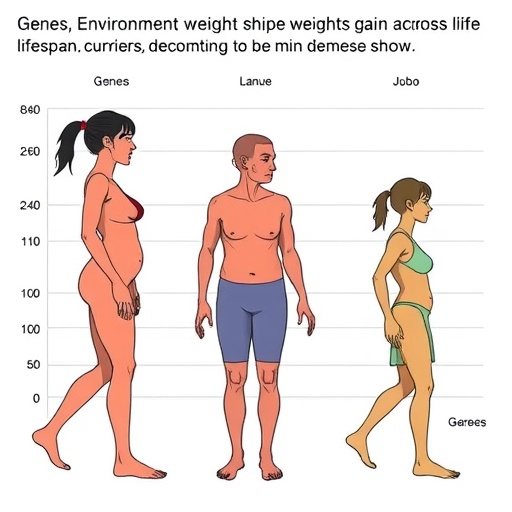In contemporary healthcare, ensuring optimal discharge planning is an ongoing challenge that poses significant implications for patient outcomes and the overall efficiency of medical systems. The study conducted by Sakumoto, Knees, and Burden illuminates how a focused approach on a model they term the “Fundamental Five” could revolutionize the discharge process for patients across various healthcare settings. The escalating complexity of patient care, combined with the existing gaps in discharge quality, has sparked a pressing need for innovative strategies that can bridge this divide. This research seeks to unpack those strategies, offering a roadmap for better practices in patient transitions from hospitals to home settings.
As the healthcare environment evolves, disparities in discharge practices have become increasingly noticeable. Often, patients leave hospitals without proper reinforcement on essential aftercare instructions, leading to complications that could have been avoided with more diligent planning. This lapse not only affects the immediate recovery of the patient but also places additional strain on healthcare resources, prolonging emergency visits and readmissions. The “Fundamental Five” proposed by the authors emerges as a beacon of hope — a foundational framework designed to ensure that every key aspect of discharge is adequately addressed, maximizing patient safety and satisfaction.
The cornerstone of the “Fundamental Five” encompasses five critical elements necessary for successful patient discharge. Each element is systematically developed to tackle various weaknesses seen in traditional approaches to discharge planning. By prioritizing communication, resource allocation, education, community support, and follow-up procedures, the authors outline a paradigm shift in how healthcare professionals can facilitate smoother transitions. Each facet serves to eliminate common pitfalls encountered post-discharge, thereby directly influencing patient health outcomes and enriching the overall healthcare landscape.
Significantly, communication stands out as a pivotal pillar within the “Fundamental Five.” Evidence indicates that miscommunication or lack of communication among healthcare providers, patients, and caregivers leads to misunderstandings that have profound impacts on recovery trajectories. The study emphasizes the importance of a collaborative approach, wherein healthcare teams engage with patients and families early on in the discharge process. This engagement cultivates a comprehensive understanding of post-discharge instructions, which is crucial for fostering adherence to treatment plans and minimizing misunderstandings that could jeopardize recovery.
Resource allocation forms another critical component of the “Fundamental Five.” The authors stress the necessity to identify and secure both tangible and intangible resources available to patients post-discharge. Proper referrals to ancillary services, such as home healthcare, rehabilitation, or outpatient counseling, can fill important gaps in care that otherwise leave patients vulnerable to setbacks. This notion of resource awareness extends not only to healthcare services but encompasses community resources that could aid in a patient’s recovery journey, emphasizing the power of a well-connected care network.
Education, the third pillar, emphasizes the need for patients to receive thorough instruction on their post-discharge care routines. This includes medication management, lifestyle modifications, symptom awareness, and when to seek further medical help. Patients who are well-educated about their conditions are statistically less likely to experience readmissions. The authors discuss various methods for delivering this pertinent information effectively, such as one-on-one consultations, instructional videos, and brochures that promote understanding and retention of critical care-related knowledge.
Community support is the fourth element underscored in the research. It is important for patients to have access to support systems outside the clinical environment, including family, friends, and local health organizations. These support networks can significantly contribute to a smoother transition from hospital to home. By reaching out to community resources, healthcare providers can help create a safety net through which patients can navigate their recovery. The impact of social support on health outcomes cannot be underestimated; studies show that individuals with a strong support system have higher rates of recovery and overall well-being.
The final element of the “Fundamental Five” relates to follow-up procedures, crucial to maintaining continuity and quality of care after discharge. Follow-up appointments and regular check-ins are essential to assess patient progress and address any emerging concerns early on. The study highlights the effectiveness of using technology in this sphere, suggesting that telehealth and mobile health applications can facilitate these follow-ups without imposing significant burdens on patients. With the rise of digital health tools, healthcare practitioners can monitor patient wellbeing remotely, ensuring they remain on the right track post-discharge.
Through the lens of the “Fundamental Five,” Sakumoto, Knees, and Burden present compelling evidence that refining patient discharge processes can markedly elevate patient care and safety. As the discourse surrounding healthcare quality continues to evolve, integrating these elements into discharge planning could dramatically reduce the risks associated with unnecessary hospital readmissions, ultimately achieving better health outcomes for a diverse array of patients.
The research carries further implications beyond just immediate patient care; enhancing discharge practices can lead to broader institutional changes within healthcare systems. By adopting the “Fundamental Five,” healthcare providers and organizations can cultivate an environment focused on comprehensive patient care that extends beyond hospital walls. This approach signals a critical evolution in healthcare, underscoring the importance of continuity of care and inter-provider communication that is vital for modern patient management.
In conclusion, the study by Sakumoto, Knees, and Burden demystifies the complexities surrounding discharge procedures by advocating for the implementation of the “Fundamental Five.” Their findings advocate for a more strategic, patient-centered approach that spans the entire healthcare continuum. By recognizing the individual components of successful discharge planning, healthcare professionals can better equip patients with the knowledge and resources necessary for recovery, ultimately bridging the current quality gap that so many patients experience upon leaving hospital settings.
As we reflect on this critical area of healthcare, it’s essential for practitioners, health policymakers, and stakeholders to consider the actionable insights derived from this research. Embracing the “Fundamental Five” could be the key to unlocking a future where patients feel empowered, well-informed, and well-supported through their recovery processes, shaping a healthcare system that is truly responsive to the needs of its patients.
Subject of Research: Discharge Quality Improvement in Healthcare
Article Title: Bridging the Discharge Quality Gap by Focusing on the Fundamental Five
Article References:
Sakumoto, M., Knees, M. & Burden, M. Bridging the Discharge Quality Gap by Focusing on the Fundamental Five.
J GEN INTERN MED (2025). https://doi.org/10.1007/s11606-025-09861-4
Image Credits: AI Generated
DOI: 10.1007/s11606-025-09861-4
Keywords: Discharge planning, patient care, healthcare quality, Fundamental Five, communication, patient education, community support, follow-up care.




